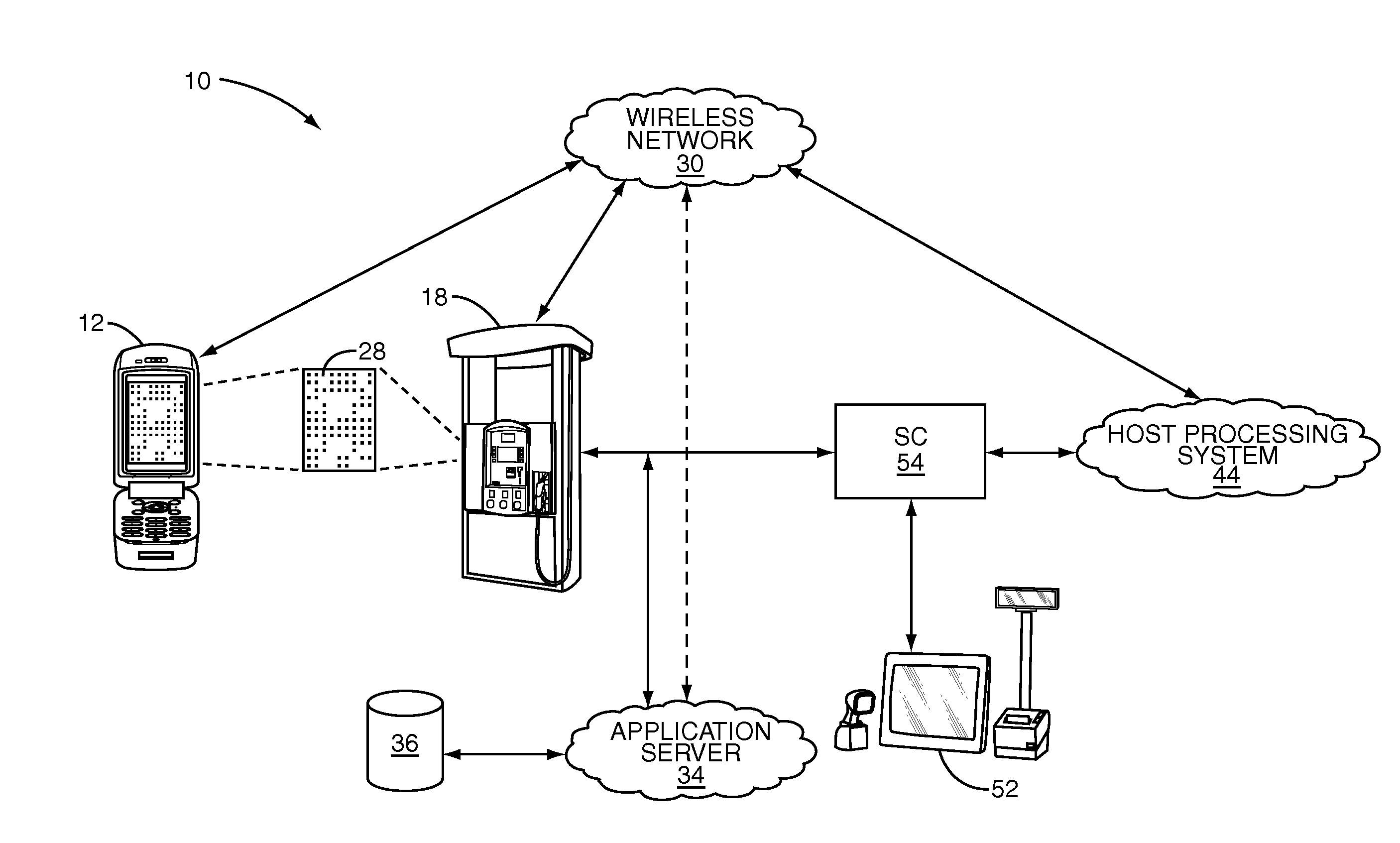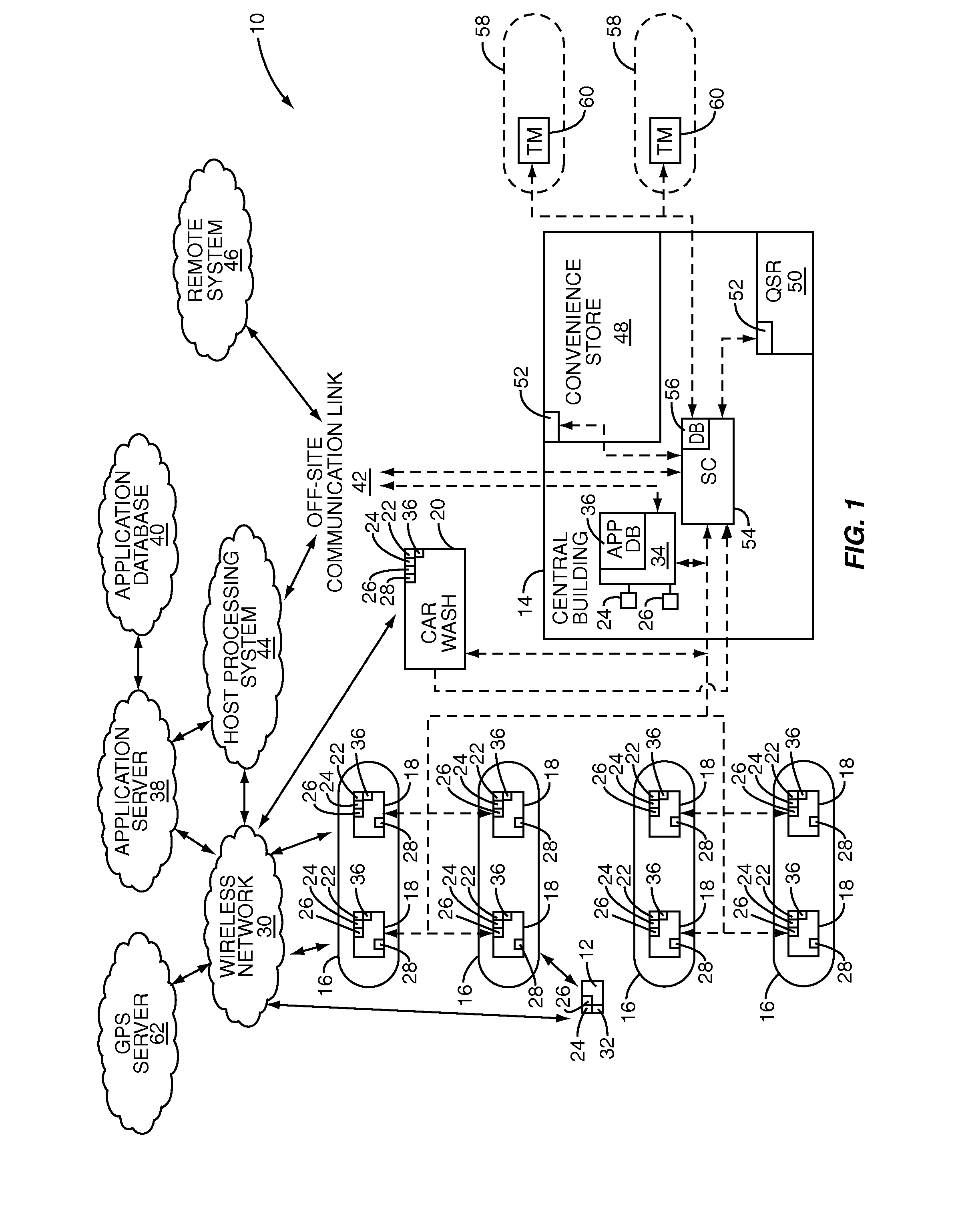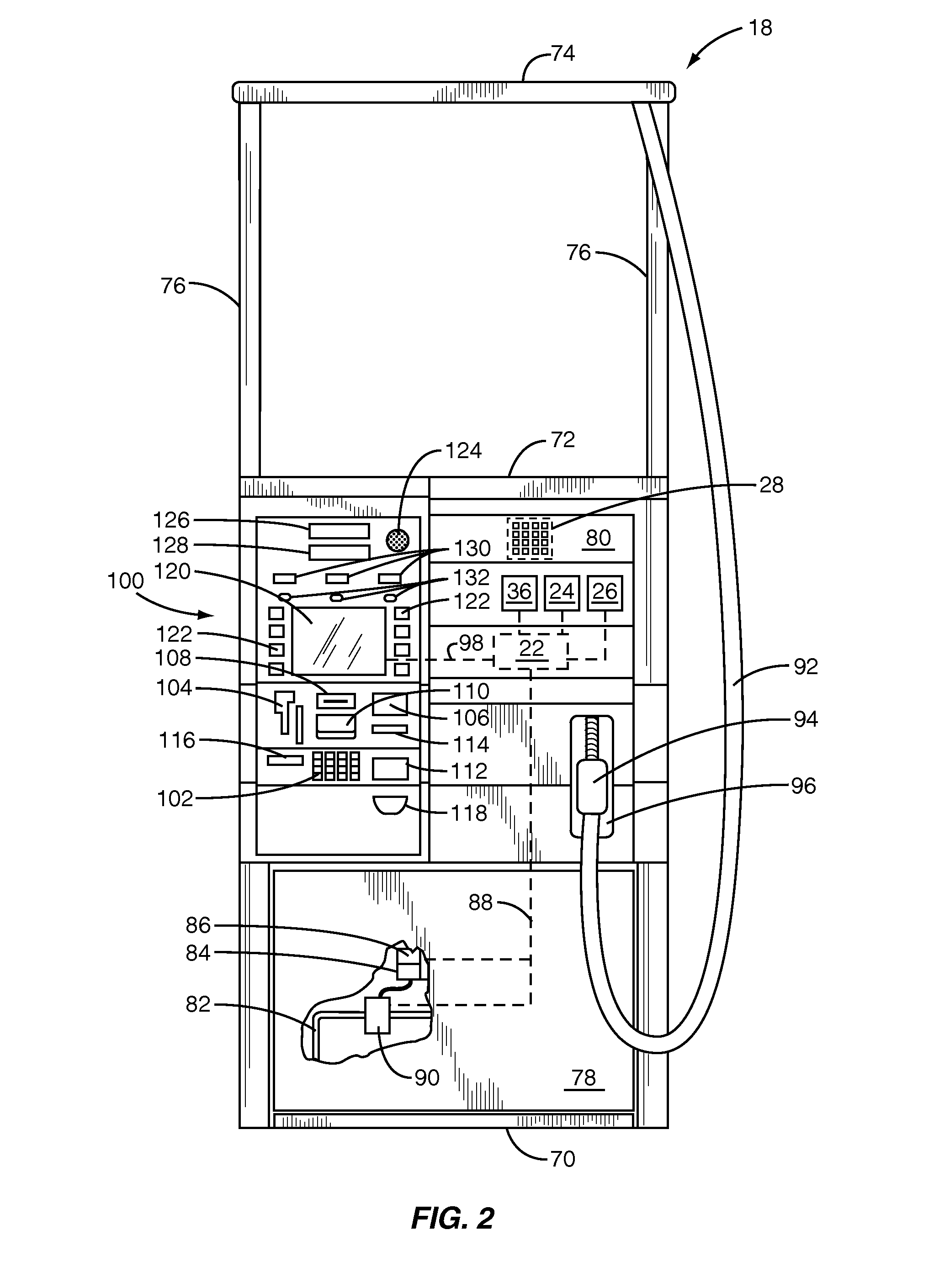[0006]The present invention provides an
application specific user interface on a customer personal
communication device, such as a
cell phone or personal digital assistant, for conducting transactions with fuel dispensers. The customer, by interacting with the
application specific user interface on their personal communication device, as opposed to the built-in standard user interface on a
fuel dispenser, provides input and receives output to conduct a transaction. In this manner, the customer interacts with their familiar personal communication device to conduct a transaction as opposed to user interfaces that vary among retail fueling environments due to factors, such as brand and the fueling device manufacturer. Although not required by the present invention, providing the ability for the user interface to be provided on the customer's personal communication device can allow for device manufacturers to either scale back or altogether eliminate the built-in user interface, thereby reducing costs as well.
[0008]An
application specific user interface, referred to herein as a customized transaction application (CTA), is downloaded to a customer's personal communication device, either as a stand-alone application or as a user interface to a
server-based application. The CTA allows the customer to perform
transaction processing in the customer's native language within a retail fueling environment located anywhere in the world. The CTA maintains customer transaction preferences, including the customer's preferred fuel grade and whether the customer wishes to receive a
receipt. This allows the customer to complete transactions within the retail fueling environment in an automated manner. By use of the present invention, the customer may avoid learning a new user interface when performing a transaction within a retail fueling environment that the customer is visiting for the first time.
[0014]In an alternative embodiment, fraud may be prevented by utilizing
global positioning system (GPS) functionality associated with the customer's personal communication device to verify that the customer is truly located at the
fuel dispenser associated with the code that has been obtained from the
fuel dispenser. By utilizing GPS
verification, persons attempting to perpetuate fraud will be prevented from placing a code on a fuel dispenser at the retail fueling environment at which the customer is attempting to complete a transaction that is actually associated with a fuel dispenser located at another retail fueling environment. As such, the
system will ensure that the fuel dispenser at which the customer is attempting to authorize a transaction is actually located within the retail fueling environment where the customer is located.
[0015]In another alternative embodiment, customer preferences may be created and preserved to allow the customer to customize the
transaction processing interface to allow
repeatability of
transaction processing with limited customer interaction. Additionally, the customer profile may allow the customer to travel anywhere in the world and complete a transaction within a retail fueling environment without being required to know the native language at that location. For example, the customer may configure the CTA to utilize the customer's native language for interactions with the customer and to modify customer selections or preferences to accommodate user interface requirements of fuel dispensers automatically and without customer intervention. As such, a customer may utilize a common user interface for all transactions within a retail fueling environment independently of variations in user interface requirements of the fuel dispensers within the retail fueling environment.
[0019]Alternatively, the menu may be stored on the customer's personal communication device and the CTA may verify that it has the latest version of the menu prior to presenting the menu to the customer on the customer's personal communication device. In either instance, information, such as language preference, may be used during the download process to select a menu that is represented in the customer's native language. The customer selects items from the menu and places an order using the CTA on the customer's personal communication device. Preferences may be stored within the customer's personal communication device to expedite future orders when the preferences adequately identify what the customer wishes to presently order (e.g., a hamburger,
french fries, and a drink). The order is forwarded along with
payment indicia and information identifying the customer's personal communication device via the
wireless network or the
Bluetooth wireless connectivity to the vendor for fulfillment. The
payment indicia may include credit /
debit card information, pre-paid minutes associated with a
wireless or other account, a 1-900
number type of service to charge
payment to a home telephone, or any other form of payment indicia.
 Login to View More
Login to View More  Login to View More
Login to View More 


